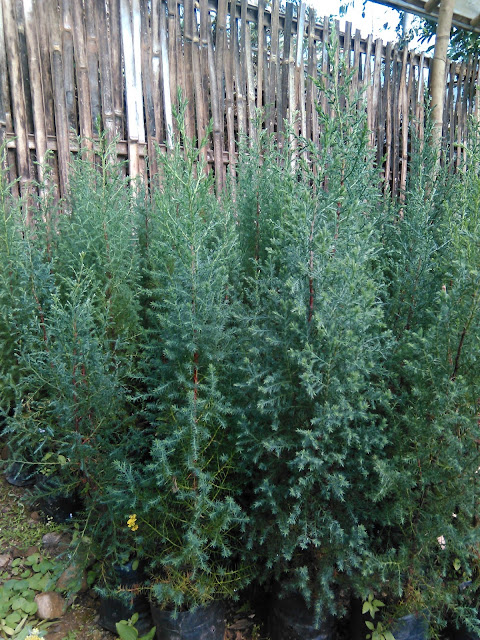Cypress pine saplings
Cypress Tree Info
Cypress trees have a straight trunk that tapers at the base, giving it a soaring perspective. In cultivated landscapes, they grow 50 to 80 feet tall with a spread of 20 to 30 feet. These deciduous conifers have short needles with a feathery appearance. Most varieties have needles that turn brown in winter, but a few have lovely yellow or gold fall color.
Bald cypress has a tendency to form “knees,” which are pieces of root that grow above the ground in odd and sometimes mysterious shapes. Knees are more common for trees grown in water, and the deeper the water, the taller the knees. Some knees reach a height of 6 feet. Although no one is sure about the function of knees, they may help the tree get oxygen when they are underwater. These projections are sometimes unwelcome in the home landscape because they make mowing difficult and they can trip passers-by.
How to Care for Cypress Trees
Growing cypress trees successfully depends on planting the in the right location. Choose a site with full sun or partial shade and rich, acid soil. Cypress trees are hardy is USDA zones 5 through 10.
Drench the soil around the tree after planting and cover the root zone with 3 to 4 inches of organic mulch. Give the tree a good soaking every week for the first few months. Cypress trees need water most in spring when they enter a growth spurt and in fall just before they go dormant. They can withstand occasional drought once established, but it’s best to water them if you haven’t had a drenching rain for more than a month.
Wait a year after planting before fertilizing a cypress tree for the first time. Cypress trees growing in a regularly fertilized lawn don’t generally need additional fertilizer once established. Otherwise, fertilize the tree every year or two with a balanced fertilizer or a thin layer of compost in fall. Spread a pound of balanced fertilizer for each inch of trunk diameter over an area approximately equal to the spread of the canopy.
Cypress trees have a straight trunk that tapers at the base, giving it a soaring perspective. In cultivated landscapes, they grow 50 to 80 feet tall with a spread of 20 to 30 feet. These deciduous conifers have short needles with a feathery appearance. Most varieties have needles that turn brown in winter, but a few have lovely yellow or gold fall color.
 |
| Cypress pine saplings in our nursery |
How to Care for Cypress Trees
Growing cypress trees successfully depends on planting the in the right location. Choose a site with full sun or partial shade and rich, acid soil. Cypress trees are hardy is USDA zones 5 through 10.
Drench the soil around the tree after planting and cover the root zone with 3 to 4 inches of organic mulch. Give the tree a good soaking every week for the first few months. Cypress trees need water most in spring when they enter a growth spurt and in fall just before they go dormant. They can withstand occasional drought once established, but it’s best to water them if you haven’t had a drenching rain for more than a month.
 |
| Cypress pine saplings |
Wait a year after planting before fertilizing a cypress tree for the first time. Cypress trees growing in a regularly fertilized lawn don’t generally need additional fertilizer once established. Otherwise, fertilize the tree every year or two with a balanced fertilizer or a thin layer of compost in fall. Spread a pound of balanced fertilizer for each inch of trunk diameter over an area approximately equal to the spread of the canopy.
